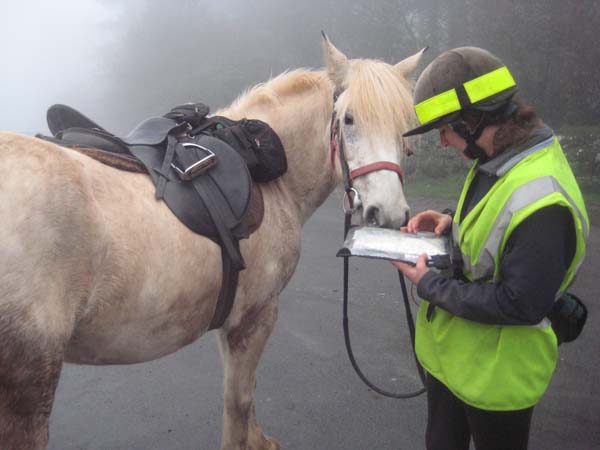Pre-trip Planning Acquire trail map(s), and talk to other riders that know the area Select trail appropriate for the expectations of your group Select trail difficulty and length that is safest for the least experienced horse and rider Select trails that avoid high mountain areas during afternoon lightning storm seasons Contact trail owner or manager for current trail conditions and any restrictions If you are hiring/leasing horses or guides, check references and reputations Precondition both yourself and your stock for the challenges of the trip For SAFETY SAKE, check condition of your vehicle, hitch, lights, brakes and trailer Let a responsible person know your trip plans, i.e. places and dates
Preparing Stock Select an animal that has good withers, legs, feet and attitude for the trail environment Schedule instruction from an experienced trail-riding instructor, if necessary Condition your stock for water crossings, trail hazards, trip length and altitude Be able to catch your horse quickly or have it corralled the night before your trip Practice trailer loading and unloading before the trip to the trailhead Check with your veterinarian and ferrier for animal health and shoeing needs Make sure you carry all certificates of heath, Coggins testing and brand inspections Identify stock pecking orders and personality traits that others should know about Precondition stock to ropes, dogs, llamas, mountain bikes, motors, wildlife and etc. Train stock (and yourself) to mount from either side when in steep country Train stock to handle fly wipes and spray bottles Train stock to eat from a nosebag

Saddles and Tack Use a saddle that fits both you and the horse. Label tack with horse/and or rider’s ID. Saddle should be clean, well oiled, and free of protruding nails and wear. Adjust stirrup length to allow three fingers under seat when standing in saddle Select a sturdy bridle with brow band and cheek strap to avoid being pulled off Select bit appropriate for the horse’s level of training and comfort Use split reins to avoid both horse and rider hanging-up branches, arms and legs A double-rigged saddle should be cinched in the ¾ position to avoid chaffing Assure the rear cinch is attached to the front cinch and touching horses stomach Saddle should be rigged with breast collar attached to “D” rings for mountain riding Consider adding a crupper or britchin for a horse with poor withers or round body Pads should be of a style and thickness to fit the saddle and protect the horses back Use a flat nylon strap halter and at least a 10 ft. lead rope
Saddle Equipment and Accessories Saddlebags should be as small as possible, balanced and not overfilled Saddle strings, 3 ft. long, should be available to secure a coat and/or rain gear Equine first aid kit Horseshoe and nails or replacement boot Hoof pick, brushes, curry comb and leather punch Repair kit with extra leather thongs, Chicago screws, etc. Water, bucket, sponge, sweat scraper
Personal Gear Western hat or safety helmet Riding boots with smooth soles Safety strap or “stampede string” for hat Day jacket or vest Leather riding gloves and gloves for the weather Rain slicker, rain cover for hat Chaps or chinks (optional) Long sleeve shirt Handkerchief or scarf (silk) Trousers, denim Spurs (optional) Multipurpose knife Flashlight Dark glasses Sun lotion Lip balm First aid kit Insect repellent Canteen Toilet paper
Used with permission from Steve Deitemeyer, CF, Wildland Resources 3724 Union Court Wheat Ridge CO.

